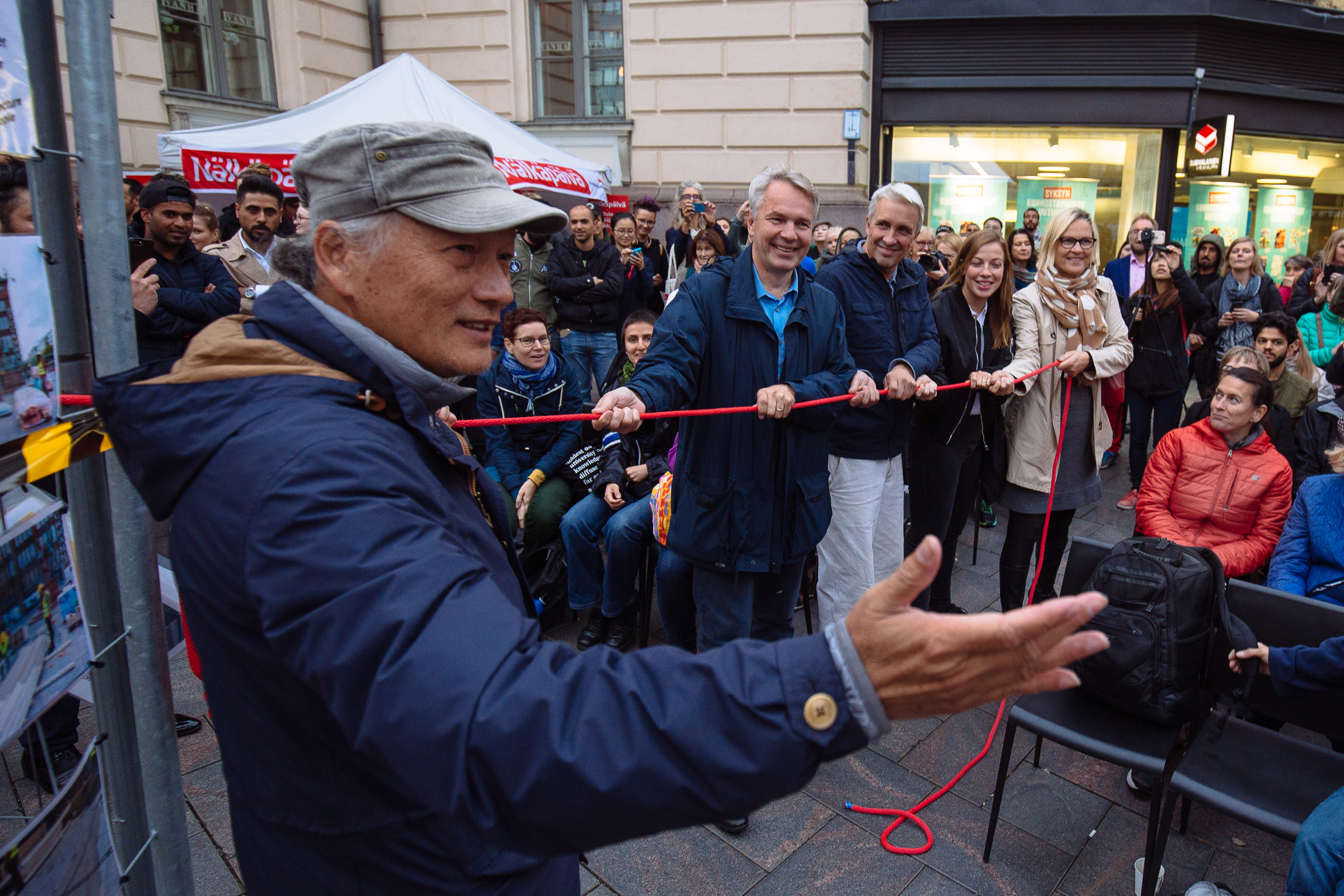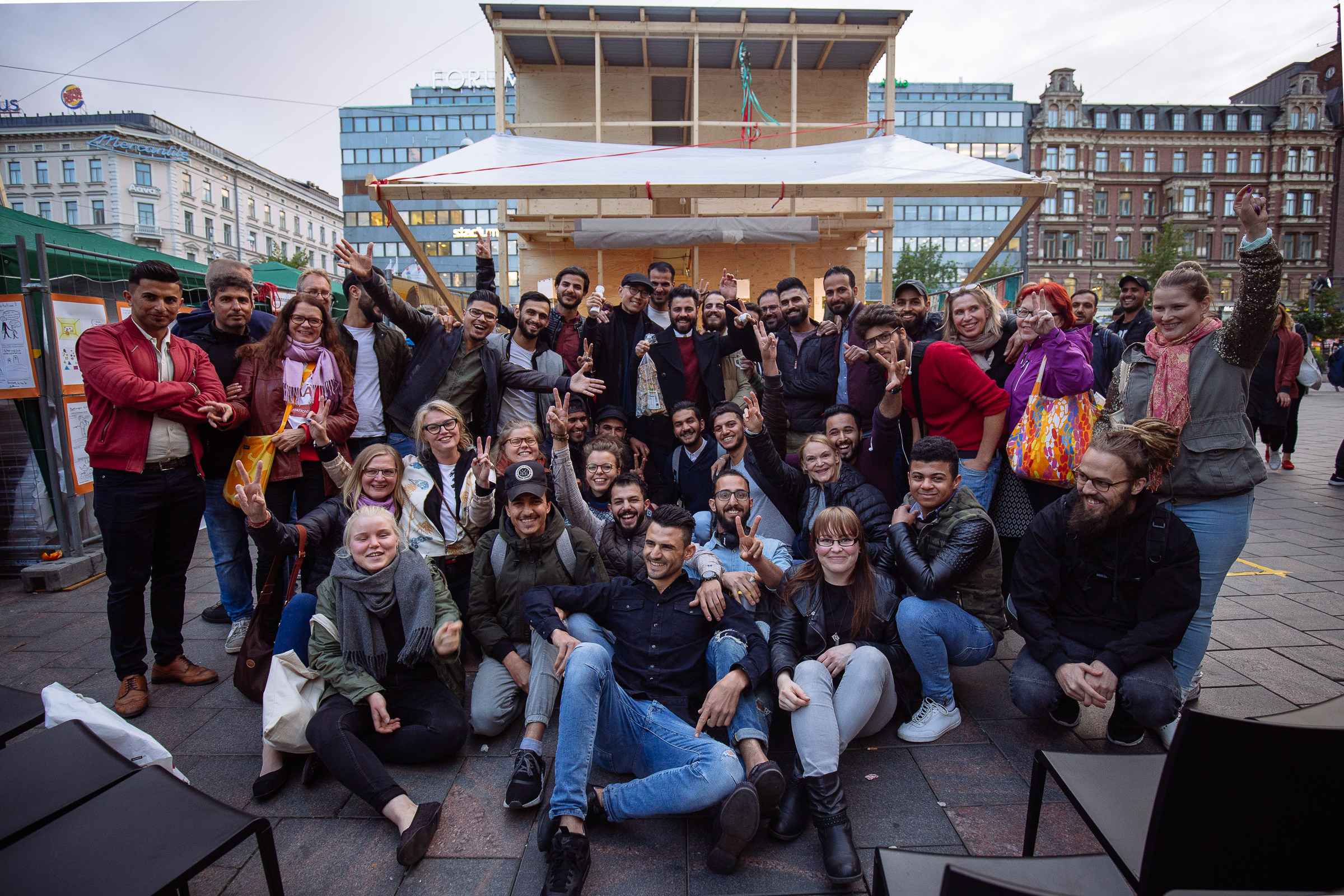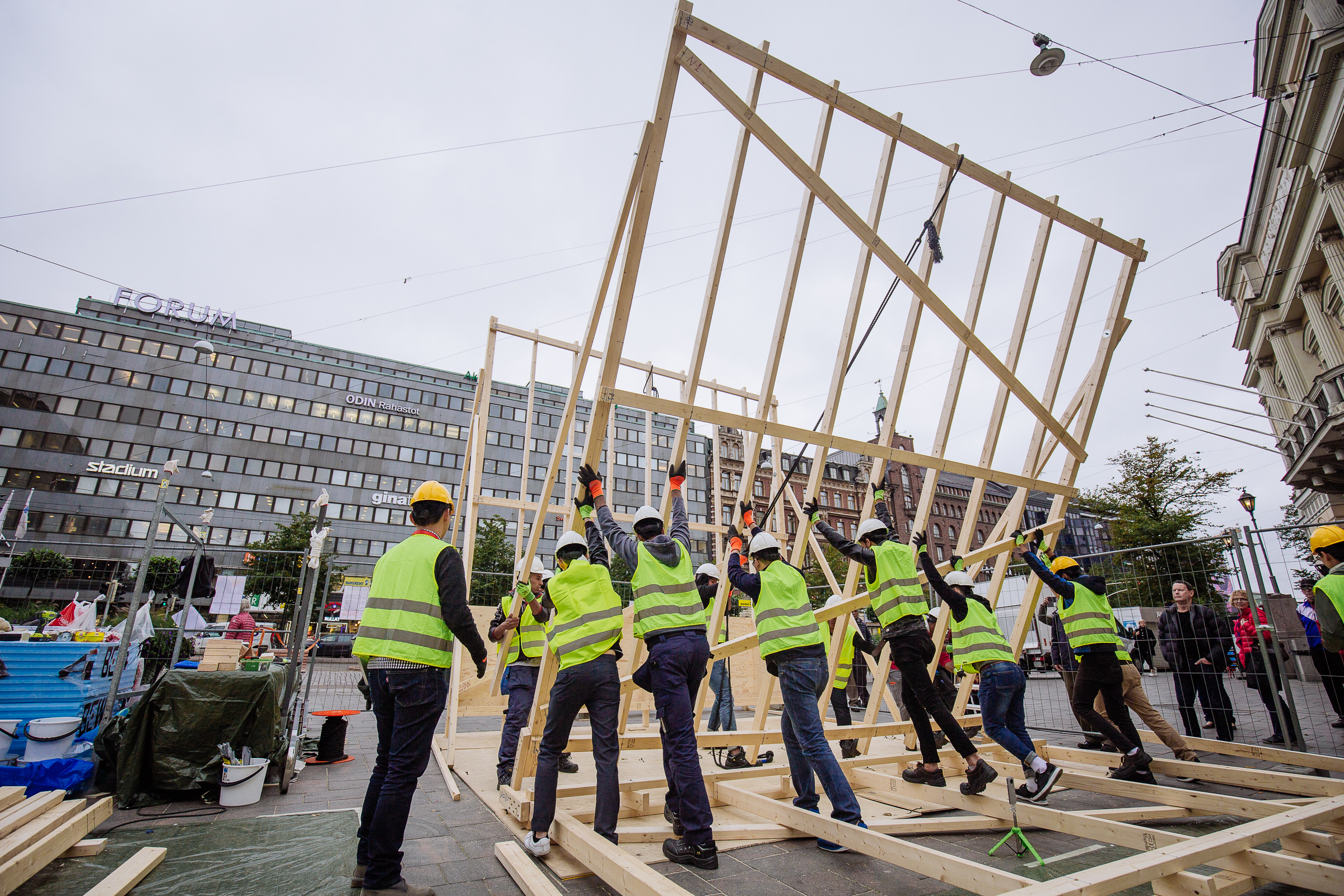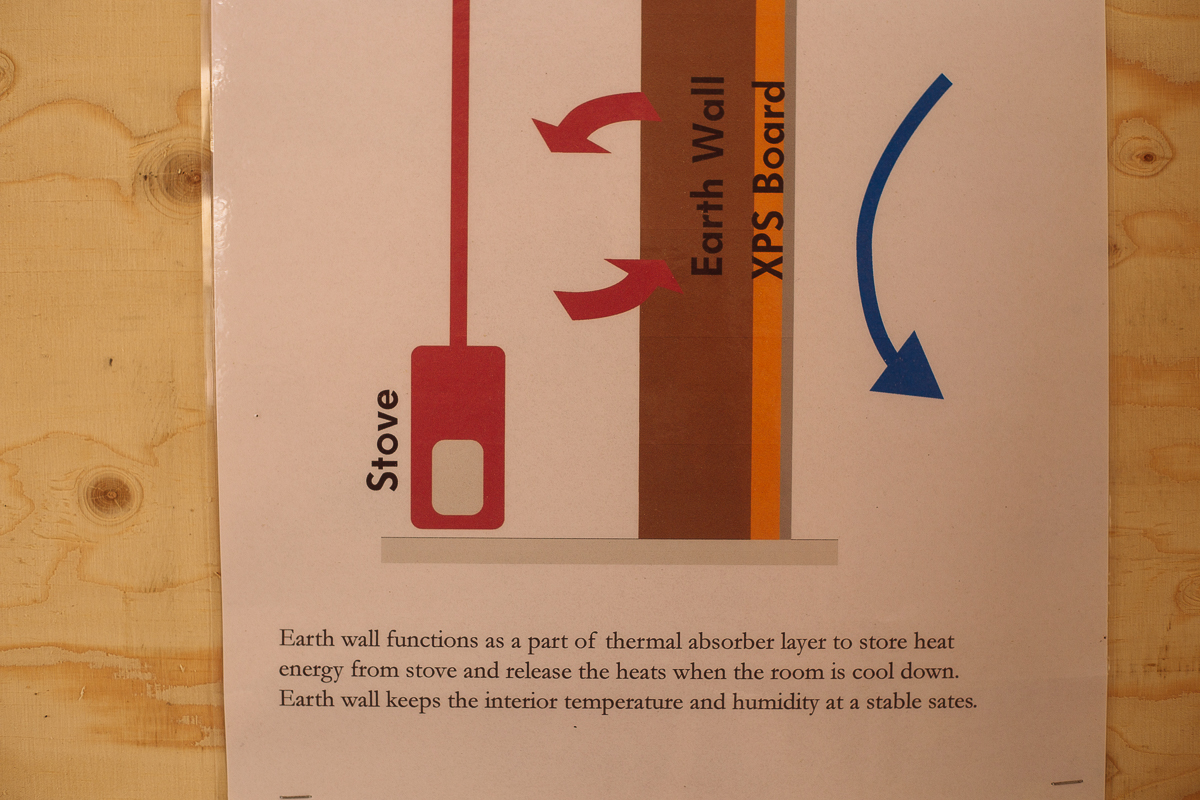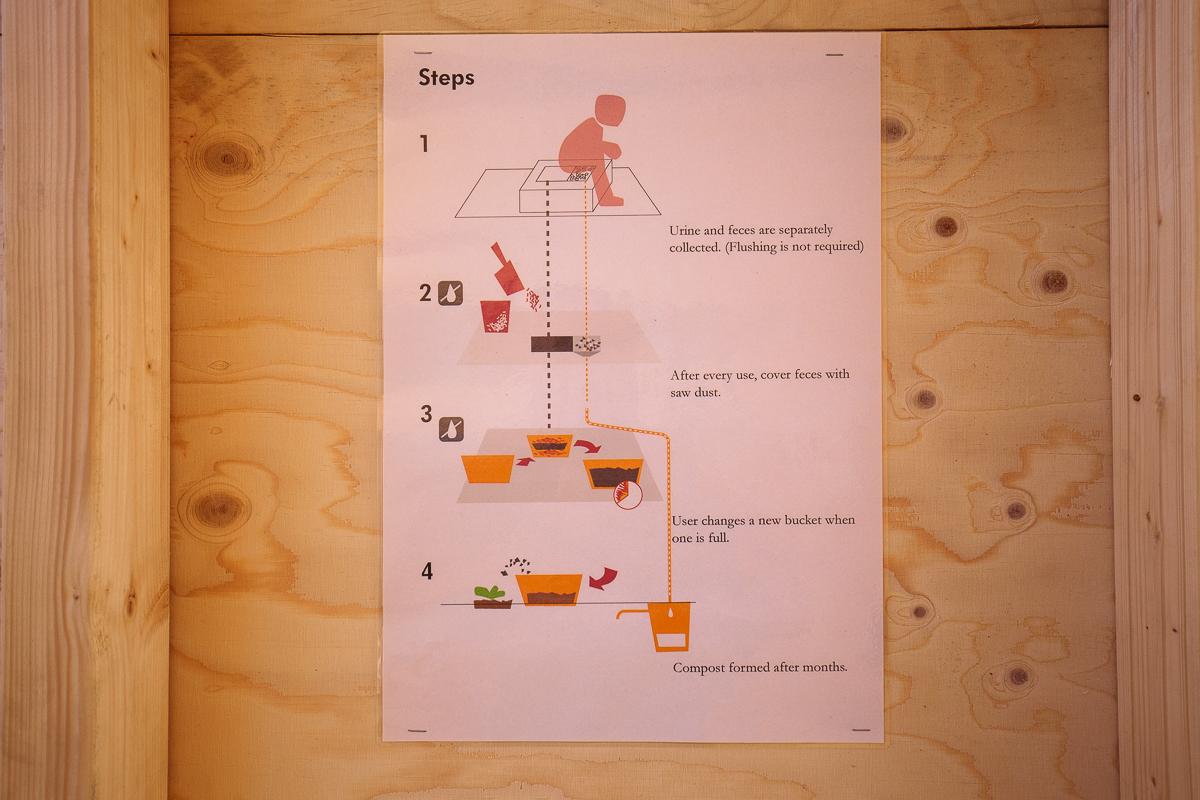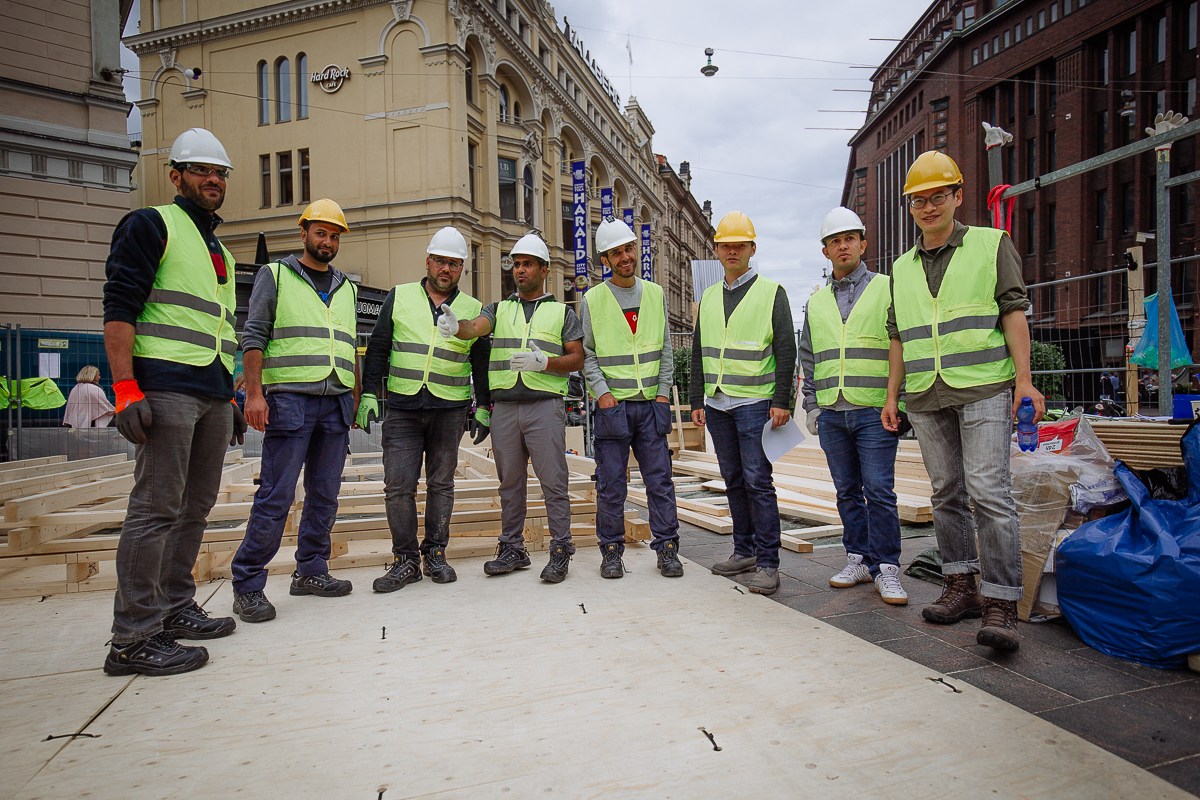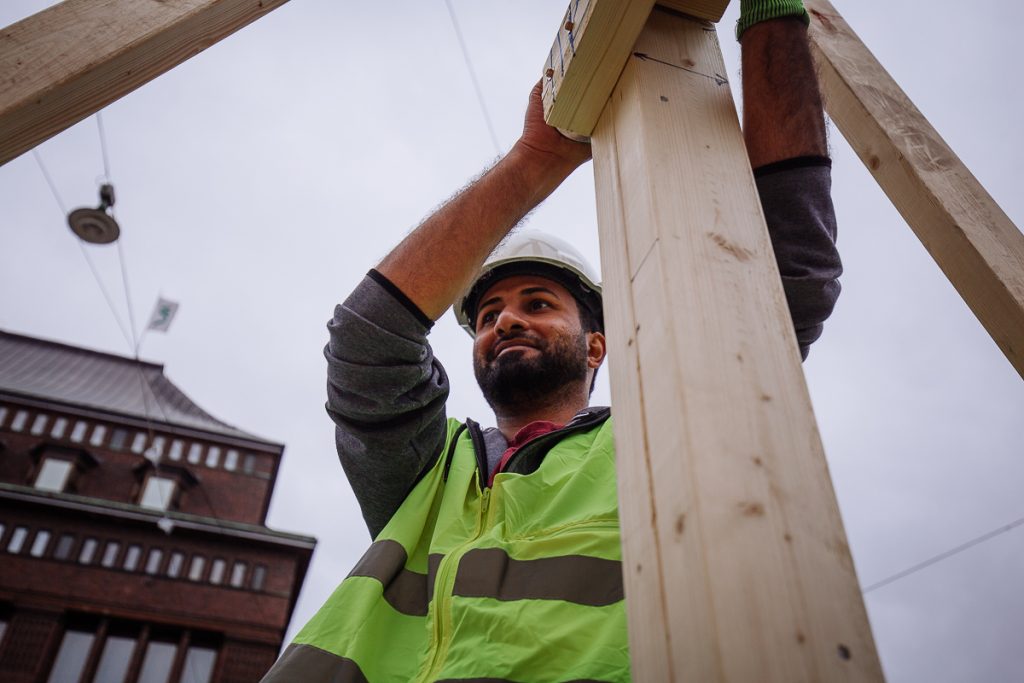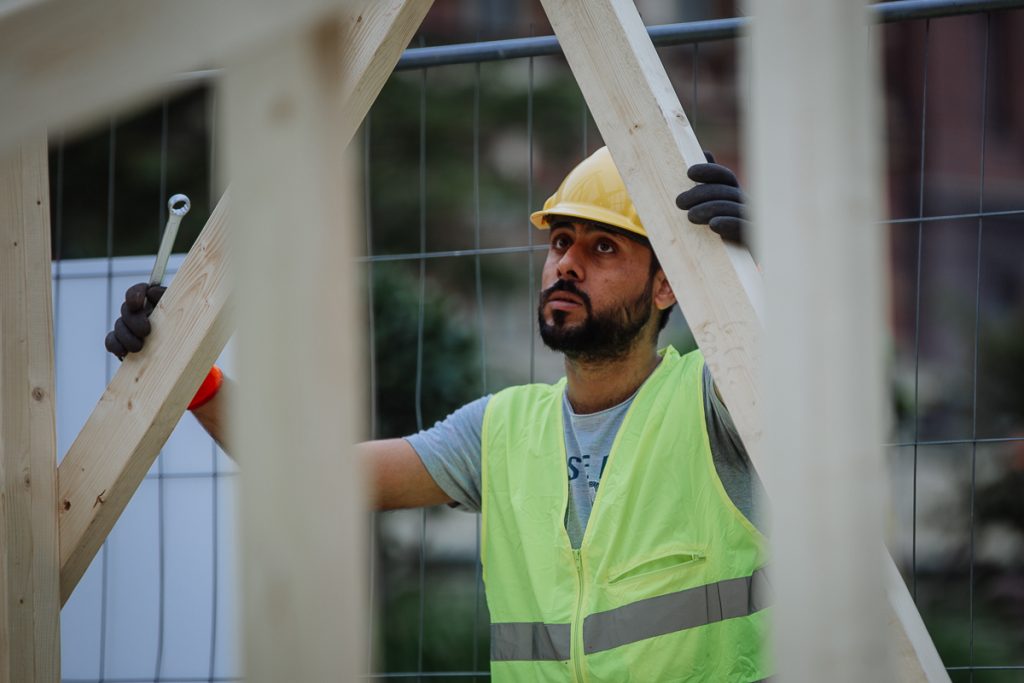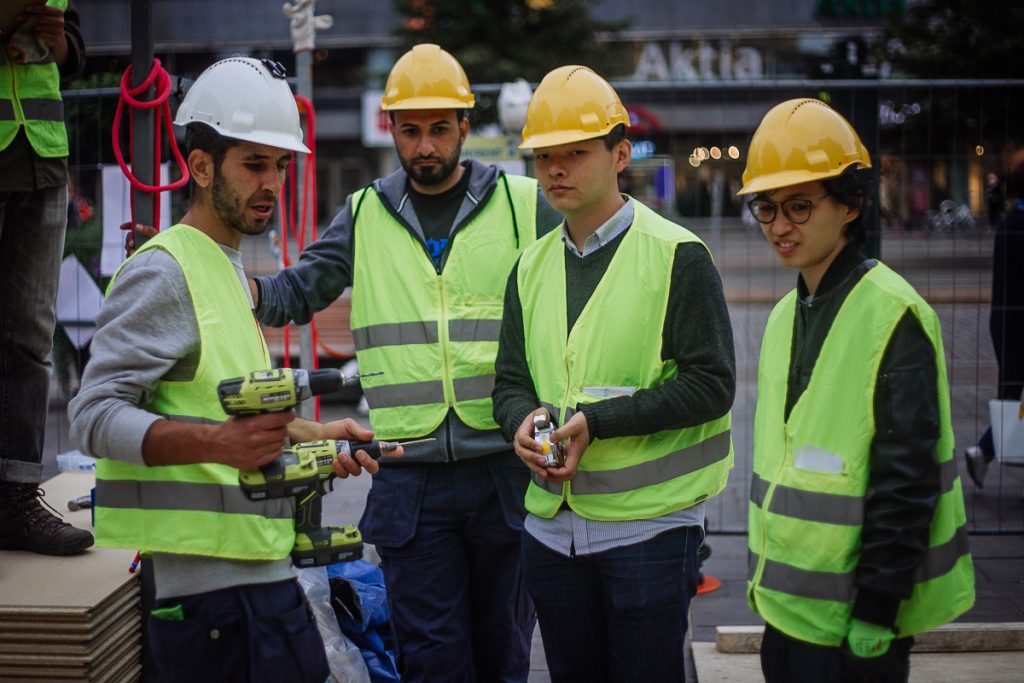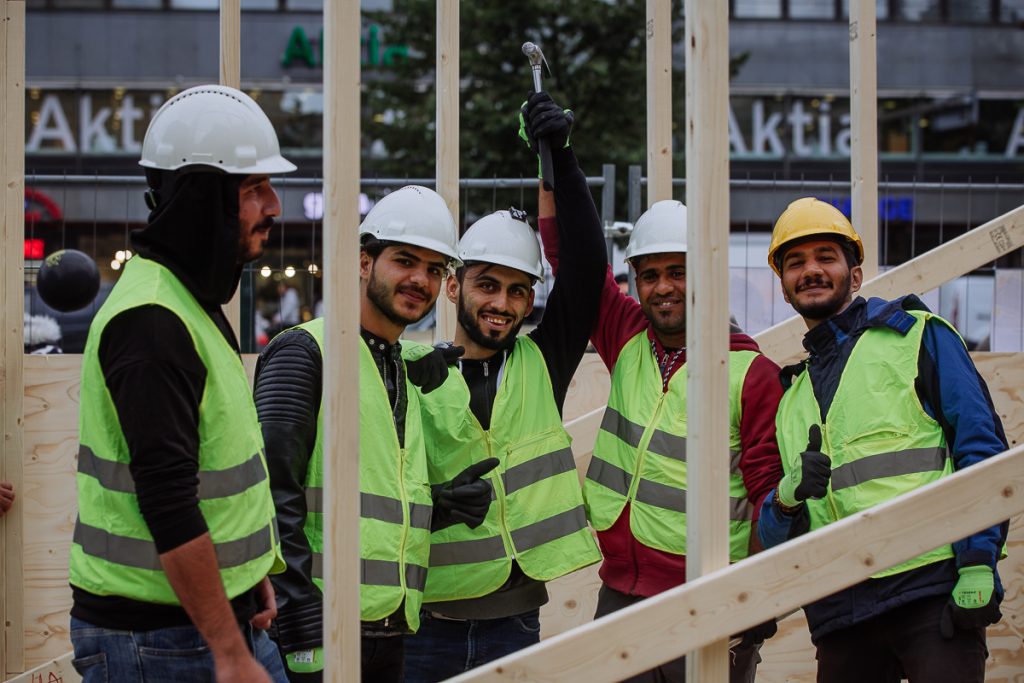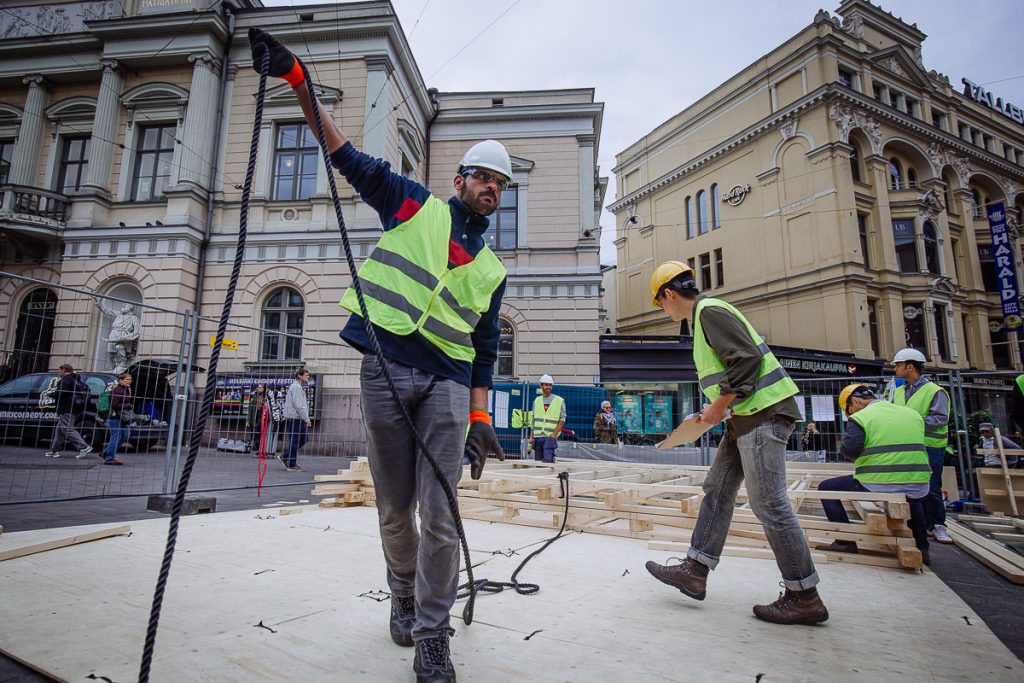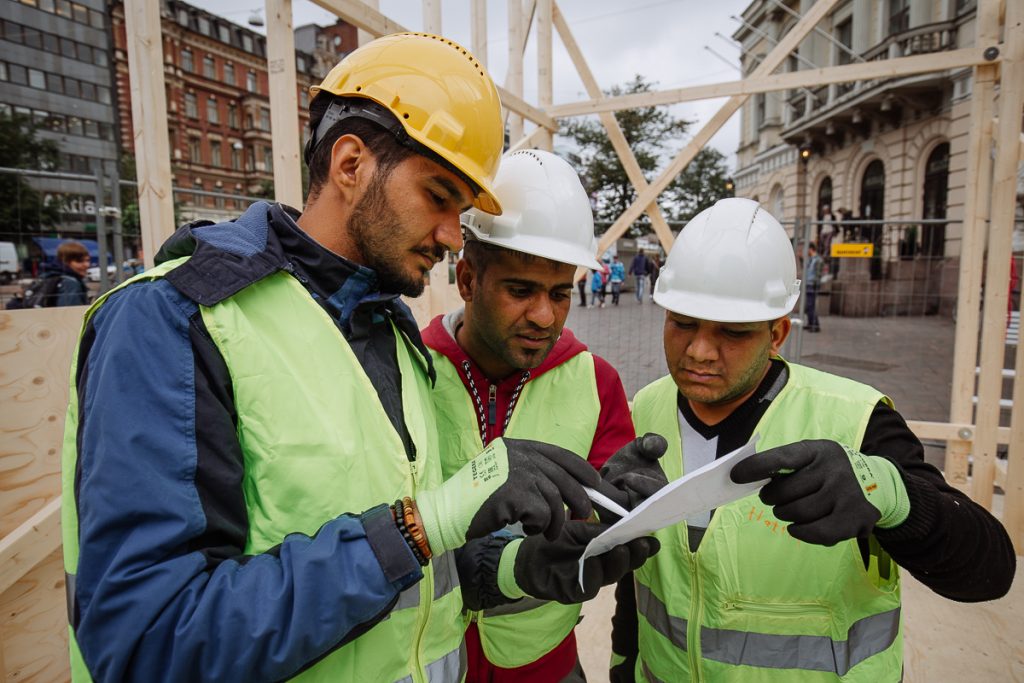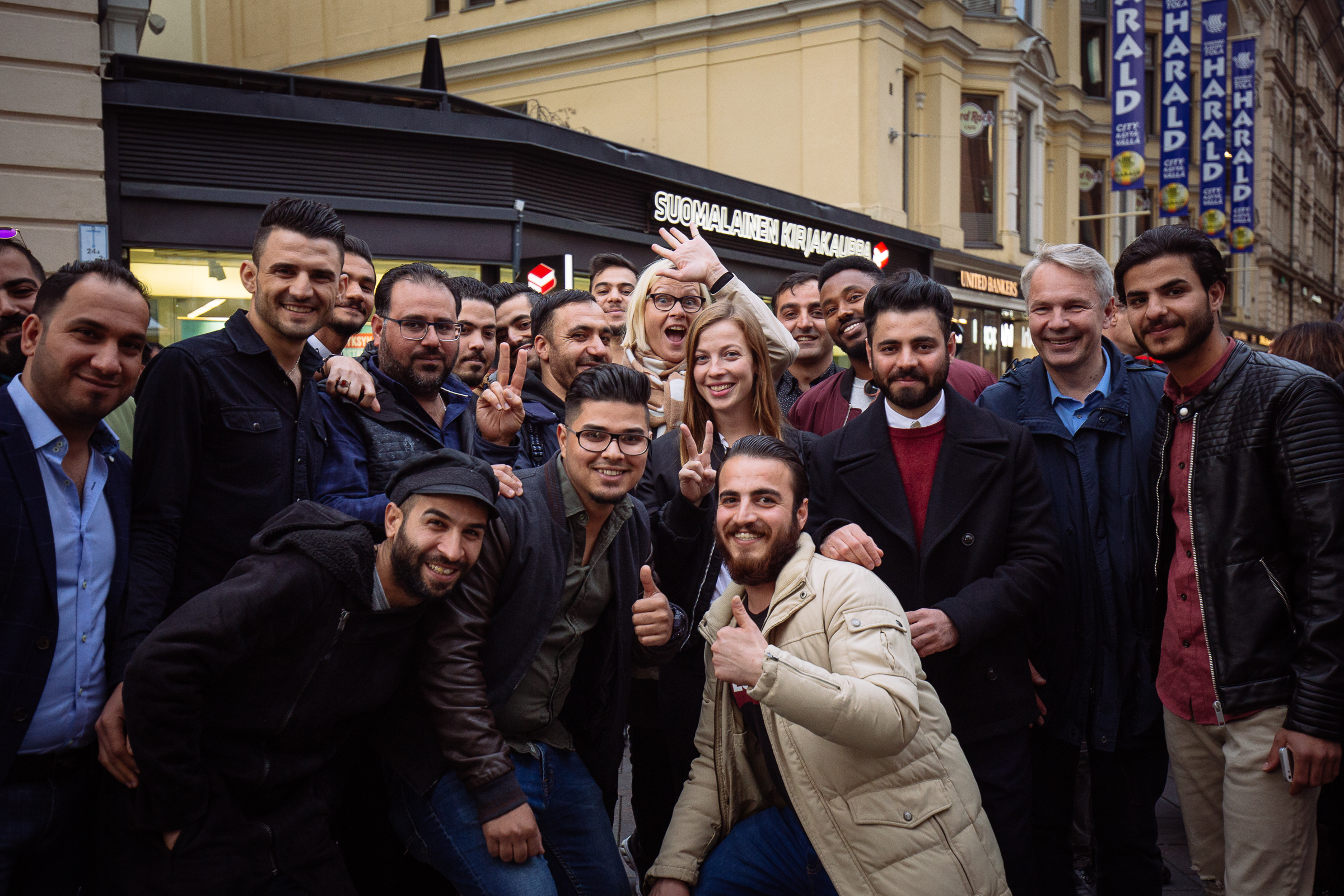People’s architecture at Helsinki Design week
Over the last two weeks, Taiwanese architect from People’s architecture have been working on an installation on one of the main spots of Helsinki city. Architect HSIEH Ying-Chun specializes in building temporary housing in disaster-struck areas. Next to the “three smiths” statue, together with asylum seekers, they were constructing such a house as a part of Helsinki Design Week.
People’s architecture proposed their housing solution to help solving the settlement of asylum seekers. According to the architect, the house can be constructed in a month. At Design week, they had a demonstration, lasting for 2 weeks.
I was invited to cover the event by some activists, working with asylum seekers, who I got to know during my previous projects related to the refugee crisis in Finland (Part 1, Part 2).
I decided to find out more about People’s architecture project from its leaders.
Interview with the architect
This is an interview with a Taiwanese architect HSIEH Ying-Chun, translated by his colleague CHIU Chen-Yu.

I have read your background and saw that you are specializing in building temporary housing for people in disaster-struck areas. What made you come to Finland?
Last year October, in Helsinki we showed our cinema and delivered a speech in the architectural society. Also at the same week, we delivered a workshop at a reception center for asylum seekers about how to build a house.
In the end of last year CEO of the Helsinki design week visited Taiwan, where we also had an exhibition. He was very impressed. He wanted us to negotiate with the Helsinki city government to have our event. So this year, we are in Helsinki.
Can you tell more about the project? What are you constructing and what is the purpose?
The architect said something very beautiful. It is an allegory to classical literature, telling about a craftsman, who wants to build a house next to the main boulevard. It has been 3 years, and the house still cannot be finished. If someone is riding a horse, he tells that house is too low, Is someone walking down the street he tells it is too high.
This allegory tells us that architecture is not a personal business, not an implementation of personal ego. Architecture is some sort of social event and that architect should engage with society. We see our construction as a demonstration of the building process and as a way of engaging with Finnish society.
Our installation is also a criticism of the materialization and consumerism in today’s building culture. Today’s house is a product, it doesn’t have any relationship with a human being, or with nature, with the environment. As a human being, as an animal, supposedly we have to know how to build a house. But today’s housing industry forces us to lose such an important original ability of human beings. This becomes really visible in some special, critical situations. Basic human right to live, to build a house, to own a house, it all can be discriminated, all can be wept out. It is wrong.
Building a house together with your friends, family, and community is such an important social event in everyone’s life. With consumerism, we lose the chance to engage with our society and to reinforce the relationship with our community. The ability to build a house is now not recognized by our society, not recognized by consumerism. Our installation is next to the statue of three Smith, which shows the beauty of collaborative work. And we show the same thing that this statue present.
So that is why, we invite asylum seekers, refugees, and citizens, all of whom are unprofessional to build a professional house. In building process, we try to get back an essential right of human being and value of the labor work. Beside the humanistic value, we also touch the issue with environmentally friendly design and sustainability. That is why we adopt the local material – timber.
With our building technology and structure, we are trying to present an open system, which not only refers to “everyone can build own houses” it also refers to communication with the society. The transparent panels we have allow the people to see what is happening, so in that way, we have a small open theater. We try to make this building not only to engage with the society but also engage with the location to create more events next to us.
Is there much difference with your older projects? Is the construction different in any way?
Usually, in Asia, we apply the lightweight steel frames. In Finland, timber is much cheaper. It is also a sustainable material. We use our custom-made sheer connection elements, that are designed for simplifying the work.
The house is supposed to be a temporary shelter. We try to reduce the reliance on the maintenance system. Additionally, to existing construction, we can put the stove, water system, and eco-friendly toilet. We try to keep it very primitive and very sustainable house.

For building a house, the biggest difficulty is the land. It has a certain price. If we emphasize that the house is temporary – it could make it more simple. Maybe in this way, we will have more chances to have similar houses built.
I saw many people of different backgrounds and cultures working together, how do you think they are getting along?
Because most of our workers are volunteers, they have never been on construction site before, some of them have never held a tool before. Now they are building a house. During the process, they transform their own perception of themselves and architecture, maybe even the perception of own lives. I am pretty sure that this event would become a memorable and significant event for all of the participants.
It is considered to be a temporary shelter, how long does it take to build? For how long does it last?
With good collaboration, the construction takes one month. The house can basically stay forever because every part can be replaced.
As I saw, there is not much of production drawings or automation used in the construction. Everything is guided by you. Is it supposed to be so? Let’s consider someone else wants to construct a similar house, how they should do it without a guide?
It is always better when all is supervised by a guide, we can also do it over the internet. But a person who participates in the construction once – can be a master builder. It is very easy. If you have once experienced the whole process, next time you know how to do it yourself.
What are your next plans?
To be honest, we don’t know. We don’t know if EU society will accept our idea or not. Maybe they will wipe us out, or they will give us a chance to build a small community as a trial, as an alternative solution for the European migration crisis.
Do you have anything else to share?
I can conclude. For the asylum seekers in Europe, people tend to say “yes” or “no”, which are both very easy answers. But between yes and no we have an alternative solution – temporarily shelter. Asylum seeker comes, once they come – allow them to deliver their own effort. To create something they care about and become a contributor to the host society, to make society much more harmonious. To show they are not useless people, not a burden.
Asylum seekers come as an individual, for an individual it is so difficult to engage with the foreign society. Many of them don’t have a family, don’t have a community. Through building own houses, they can build own community, which can be the base for engaging with the host society.
Today people talk a lot about the tragedy, the terrorist attack. It happened because of an individual person, who is sick. Why are they sick? What happens if you put someone in a reception center for 2 years, now allowing them to do anything? They don’t have a family, don’t have friends, don’t have a community. They harm themselves, they also harm the society. The community and temporary solution are very important. So that is why, we always argue, that between “yes” and “no” there is a buffer zone, more possibilities to face this crisis. That is the idea behind our project.
Photos from the opening ceremony



